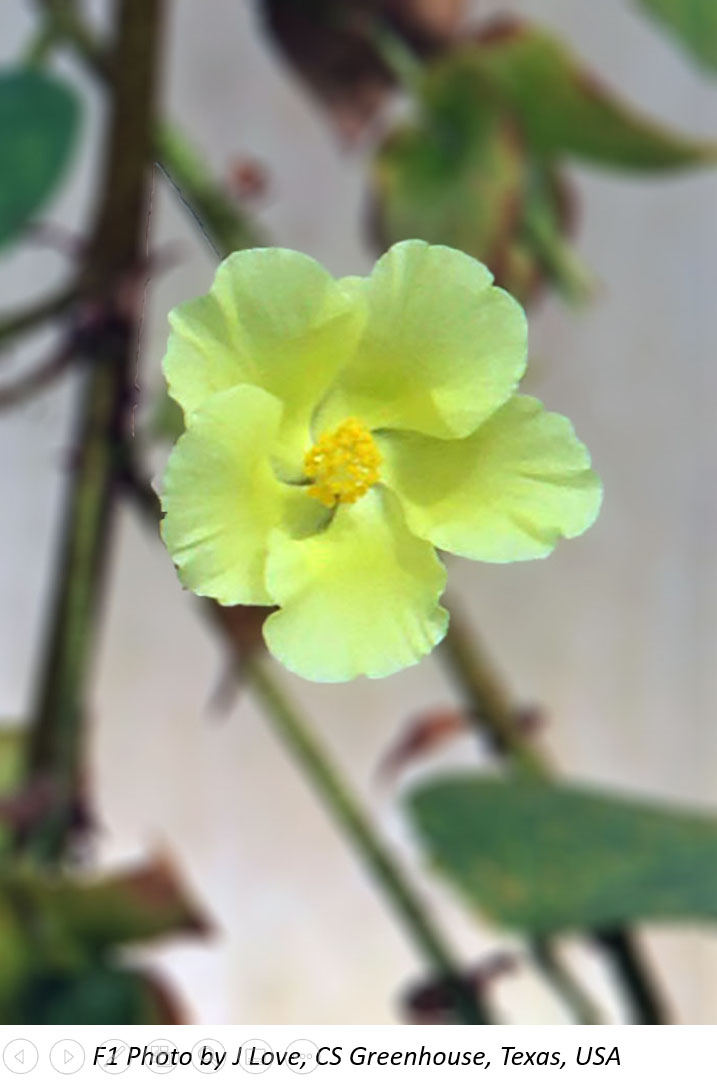| Description |
Gossypium longicalyx J.B.Hutch. & B.J.S.Lee
This species is accepted, and its native range is South Sudan to Tanzania.
According to Flora of Tropical East Africa [FTEA] Malvaceae, Bernard Verdcourt & Geoffrey Mwachala. Pavonia, B Verdcourt; Kosteletzkya, OJ Blanchard Jr.; Gossypium, P Fryxell & B Verdcourt. Flora of Tropical East Africa. 2009:
Type: Tanzania, Dodoma District: Nondwa, Disney 33 (EA!, holo.; K!, iso.)
Habit: Scandent shrubs 0.6–1 m tall, usually supported by other vegetation.
Stem: Stems sparsely pubescent to glabrescent, prominently gland-dotted
Leaves: Leaves petiolate, ovate, 4–6 × 3.5–5 cm, truncate to cordate, entire, acuminate, gland-dotted, with simple hairs on main veins beneath, otherwise subglabrous, pedately 7-veined, with an inconspicuous foliar nectary ± 5 mm from petiole on midrib beneath; stipules falcate, 4–11 × 1–4 mm, acuminate, caducous
Flowers: Flowers on sympodial inflorescences; pedicel 8–20(–30) mm long, sparsely pubescent and gland-dotted; epicalyx nectaries lacking; bracts of the epicalyx ovate-cordate, 15–25 mm long, almost as broad, entire, acute to acuminate, gland-dotted; calyx 8–15 mm long, prominently gland-dotted, minutely pubescent, deeply divided, the lobes narrowly triangular; petals yellow, minutely gland-dotted, 15–25 mm long (slightly exceeding epicalyx), ciliate on claw, pubescent externally where exposed in bud, glabrous internally; staminal column pallid, glabrous, eglandular, 8–9 mm long; filaments 1–1.5 mm long; style exceeding the androecium
Fruits: Capsules ovoid, 10–15 mm long, 3-locular, prominently glanddotted, glabrous.
Seeds: Seeds 2–3 per locule, 5–6 mm long, densely pubescent, fibres grayish, appressed.
Ecology: Seasonally wet Acacia bushland, Terminalia– Acacia– Delonix– Commiphora scrub; 800–900 m
Distribution: Flora districts: U1 T5 T7 Range: Sudan
Useful Agronomic Traits: Resistance to reniform nematode (Shim J, et al. 2018)
|


